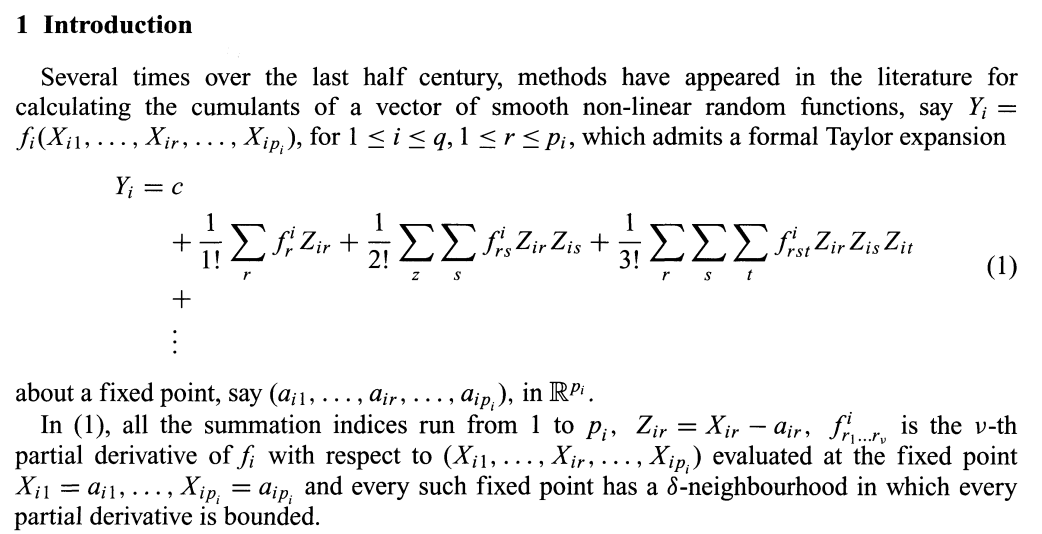Kamanzi-wa-Binyavanga, 2009, wrote the following paper, Calculating Cumulants of a Taylor Expansion of a Multivariate Function:
What I am confused about, is how precise the notation. I understand that we take each partial derivative with respect to some point ($r,s,t$ here) between $1$ and $p$, which might be the number of regressors in a statistical setting. What I don't understand is:
- Why we must sum over each $r,s,t$ individually?
- Why he sums over $z$ and $s$, not $r$ and $s$ in the double summation
- Why he actually says each of these summations is from 1 to $p_i$. Am I correct in saying, the third for example, should look like $\frac{1}{3!}\sum_{r=1}^{p_i}\sum_{s=1}^{p_i}\sum_{t=1}^{p_i}$.
- Lastly, this might seem simple, but if I wanted the Taylor expansion for the whole function $Y$, would I simply add $\sum_{i=1}^{q}$ before the term $c$?
Any help/clarity would be gratefully received. I'm trying to learn to use Einstein notation in this setting, but I need to understand exactly this expansion first.

